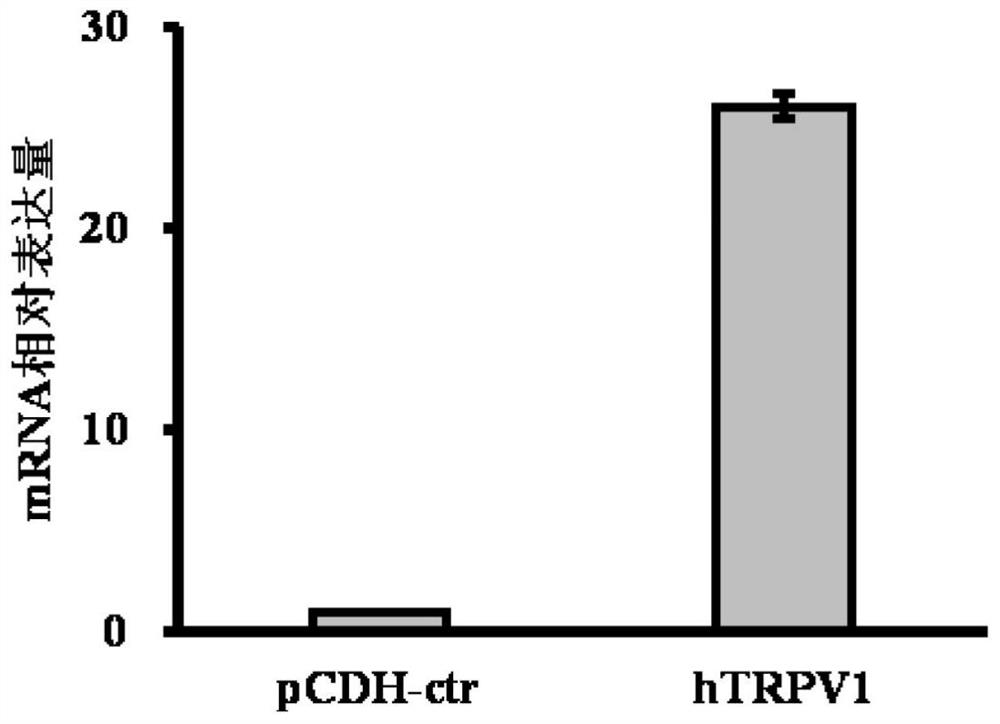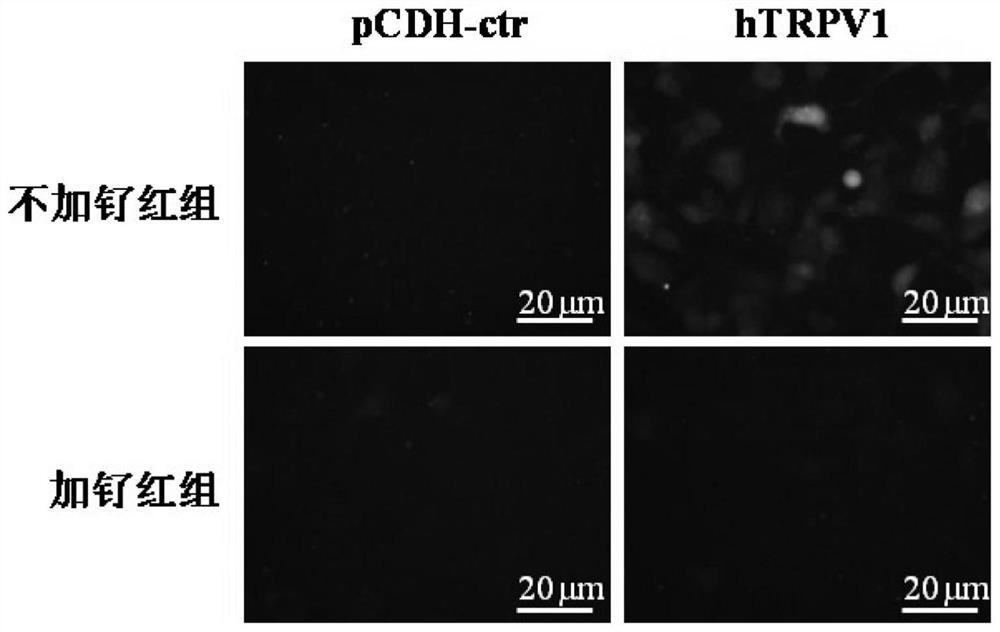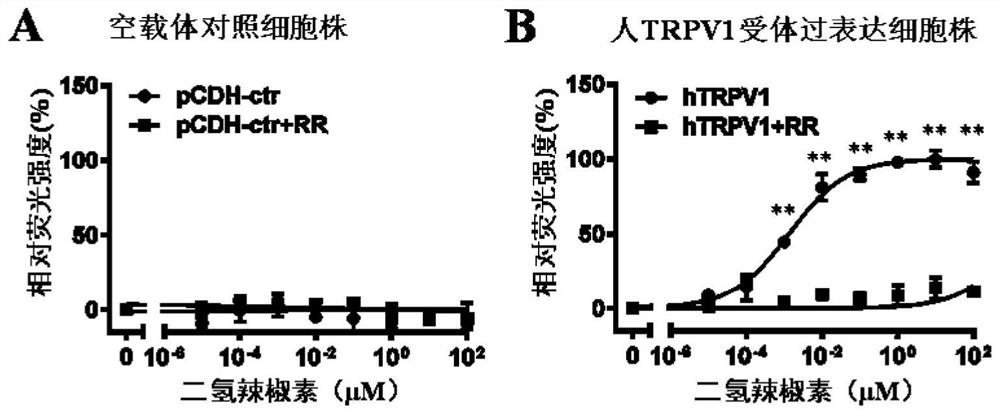Evaluation method of overexpression cell strain based on human TRPV1 receptor
A technology of overexpression and overexpression vector, applied in the direction of receptors/cell surface antigens/cell surface determinants, chemical instruments and methods, botany equipment and methods, etc., can solve problems such as inconsistent capsaicin responses
- Summary
- Abstract
- Description
- Claims
- Application Information
AI Technical Summary
Problems solved by technology
Method used
Image
Examples
Embodiment 1
[0060] Example 1: Construction of human TRPV1 overexpression cell line and detection of overexpression
[0061] 1. Experimental principle
[0062]The human TRPV1 gene was synthesized by the whole gene synthesis method and inserted into the lentiviral expression vector to obtain the overexpression vector pCDH-CMV-Puro-hTRPV1; the human TRPV1 was obtained by virus packaging, virus infection of SH-SY5Y cells and puromycin selection TRPV1 mRNA overexpression in the cell line was detected by RT-qPCR method.
[0063] 2. Experimental method
[0064] 1. Construction of virus overexpression vector pCDH-CMV-Puro-hTRPV1 (human)
[0065] Synthesize SEQ ID NO:1 (see below for specific nucleic acid sequence) by whole gene synthesis method, this sequence contains human TRPV1 gene protein coding sequence (Coding sequence, CDS) region, CDS region 5' endonuclease XbaI site TCTAGA base base and GCCACC base constituting the Kozak sequence, and the 3' endonuclease NotI site base GCGGCCGC in the...
Embodiment 2
[0073] Example 2: Fluorescent microscope observation of human TRPV1 receptor activation by dihydrocapsaicin in overexpressed cell lines
[0074] 1. Experimental principle
[0075] Fluo-4, AM is an acetyl methyl ester derivative of Fluo-4, a fluorescent dye that can penetrate cell membranes, and is often used to detect intracellular calcium ion concentration. After Fluo-4, AM penetrates the cell membrane and enters the cell, it is cleaved by intracellular esterase to form Fluo-4, which is retained in the cell. Fluo-4 is almost non-fluorescent in the form of free ligand, but it can produce strong fluorescence when combined with intracellular calcium ions, with a maximum excitation wavelength of 494nm and a maximum emission wavelength of 516nm. Fluorescence microscope, fluorescence microplate reader, etc. can be used to detect the change of intracellular calcium ion concentration. The TRPV1 receptor is a non-selective ion channel. When the TRPV1 receptor is activated by substan...
Embodiment 3
[0088] Example 3: Using different concentrations of dihydrocapsaicin to evaluate the pain evaluation method based on human TRPV1 receptor overexpression cell line
[0089] 1. Experimental principle
[0090] Fluo-4, AM is an acetyl methyl ester derivative of Fluo-4, a fluorescent dye that can penetrate cell membranes, and is often used to detect intracellular calcium ion concentration. After Fluo-4, AM penetrates the cell membrane and enters the cell, it is cleaved by intracellular esterase to form Fluo-4, which is retained in the cell. Fluo-4 is almost non-fluorescent in the form of free ligand, but it can produce strong fluorescence when combined with intracellular calcium ions, with a maximum excitation wavelength of 494nm and a maximum emission wavelength of 516nm. Fluorescence microscope, fluorescence microplate reader, etc. can be used to detect the change of intracellular calcium ion concentration. The TRPV1 receptor is a non-selective ion channel. When the TRPV1 recep...
PUM
 Login to View More
Login to View More Abstract
Description
Claims
Application Information
 Login to View More
Login to View More - R&D
- Intellectual Property
- Life Sciences
- Materials
- Tech Scout
- Unparalleled Data Quality
- Higher Quality Content
- 60% Fewer Hallucinations
Browse by: Latest US Patents, China's latest patents, Technical Efficacy Thesaurus, Application Domain, Technology Topic, Popular Technical Reports.
© 2025 PatSnap. All rights reserved.Legal|Privacy policy|Modern Slavery Act Transparency Statement|Sitemap|About US| Contact US: help@patsnap.com



